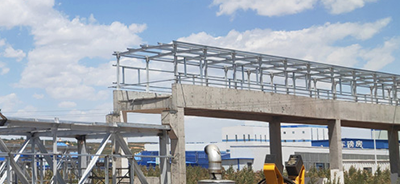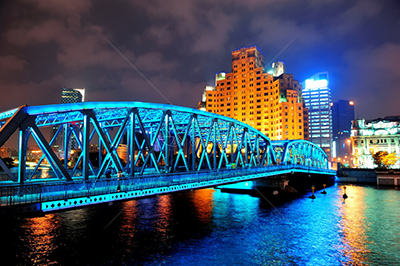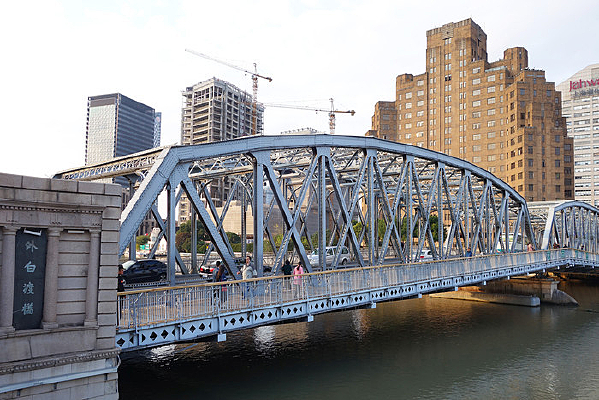Today’s world-famous bridges, such as Nanjing Yangtze River Bridge, Sydney Harbour Bridge, Golden Gate Bridge, Brooklyn Bridge, Tsing Ma Bridge, Great Belt Bridge, and Akashi Kaikyo Bridge have their own history, but all of them are essentially steel bridges. Kaikyo Bridge, all of them have their own history, but all of them are essentially steel bridges.
This article will conduct an in-depth discussion on the types, characteristics, application scenarios, etc., of steel structure bridges and combine the engineering practice of XTD Steel Company to demonstrate its basic knowledge in the design, construction, and maintenance of steel structure bridges so that everyone can have a comprehensive understanding of steel structure bridges and provide a useful reference for the development of the industry.


[Photo source: XTD Steel Structure Factory No. 6]
1. Why use steel structures for bridge construction? Benefits and considerations explained
1.1 Most of the main structure of the steel structure bridge is prefabricated in the factory (prefabricated assembly building), which effectively reduces the cycle time of on-site construction and reduces the various requirements for on-site production facilities (such as the need for a flat production site, power supply, gas supply, facility guarantee, etc., and the convenience of processing in the factory is too much, which better reduces the cost of construction.
1.2 Another advantage of steel structure bridges is that they can be installed quickly on-site, which is specifically reflected in the on-site construction and has little impact on the traffic on surrounding roads, especially on busy urban roads, because they can be quickly erected in a very short time, greatly reducing the control time for traffic. This prefabricated construction method also reduces the construction site’s safety risks.
Note: Although steel structure bridges are fast to construct and corrosion-resistant, they have poor fire resistance. Fire retardant coatings and regular inspections should also be considered during design.
2. What are the types of steel structure bridges? And what are their advantages?
- Steel structure bridges
Steel structure bridges are the most viable structural bridges after concrete bridges. Their advantages are that they are made of steel, so they have high strength and can achieve large spans and slimmer designs. They are also easy to maintain and have low requirements for transportation and installation.
- Steel structure corridors
Steel structure corridors are usually used in commercial, residential, public, industrial, and bridge engineering buildings. Their design and construction can reflect the quality and details of the building. They can improve the utilization rate and convenience of space through reasonable design and layout. Compared with traditional concrete structures, steel structure corridors have better seismic performance, providing higher security for the safety of buildings.
- Rigid frame bridges (rigid frame bridges)
Rigid frame bridges are a structural system of beams and arches. They are generally used in urban bridges with small spans, viaducts, and highway overpasses. This type of bridge has a very low building height, is very suitable for overpasses and elevated line bridges, etc., and is more economical in materials.
- Top-supported steel arch bridge
The arch column of the top-supported steel arch bridge is the main load-bearing structure. When bearing loads, the arch column will generate axial pressure. The reasonable design of the arch axis makes its force more dispersed and uniform to cross the wide river surface or valley obstacles effectively. In addition, this type of bridge has a beautiful shape, a large span, a wide view of the bridge, a simple structure, and convenient construction.
- Special-shaped steel structure overpass
Special-shaped steel structure overpass is an irregular bridge that is no longer limited to traditional straight lines or simple geometric shapes but is more inclined to be greatly twisted, wavy, circular, or a variety of combined shapes. These unique styles can often become landmark buildings in the city, enhancing the city’s landscape and urban culture.


3. What are the differences between different steel structures? In what scenarios can they be used?
3.1 Application Scenarios
- Steel structure bridges are suitable for use in large highway and railway bridges (for example, steel structures such as China’s Wuhan Yangtze River Bridge connect the city’s two sides to ensure the smooth passage of many vehicles).
- Steel structure corridors are used in commercial complexes. They have different shops and functional areas, facilitating the flow of people between different areas inside the building.
- Rigid frame bridges are suitable for use on small cross-street viaducts in cities. They do not need to take up too much space to allow vehicles and pedestrians to cross smoothly.
- Top-supported steel arch bridge: suitable for use on highways, railways, and urban roads, as well as across obstacles such as rivers and valleys.
- Special-shaped steel structure overpass: suitable for use in transportation hubs or areas with large passenger flow and complex traffic (such as around subway stations, railway stations, etc.) to guide pedestrians to pass through complex sections more safely and efficiently.
3.2 Difference
Differences in materials: Steel structure bridges mainly use high-strength steel, which has good tensile, compressive, and ductility properties and can withstand large loads. At the same time, the strength and toughness of steel give it better seismic resistance in bridges.
Service life: Under normal maintenance conditions, the service life of a steel structure bridge can reach 50 years or even longer, but this life depends on the effectiveness of anti-corrosion measures and the frequency of maintenance.
Flexible design: Steel bridges excel in aesthetics and design flexibility. Their high strength and plasticity allow for more innovative designs, creating visually impactful bridge appearances, such as arcs, suspension cables, and cable-stayed structures.


[Photo source: Garden Bridge of Shanghai]
Summarize
Steel structures are widely used to construct modern bridges due to their unique advantages. Their characteristics and application scenarios can play a huge and important role in urban construction and road transportation.
